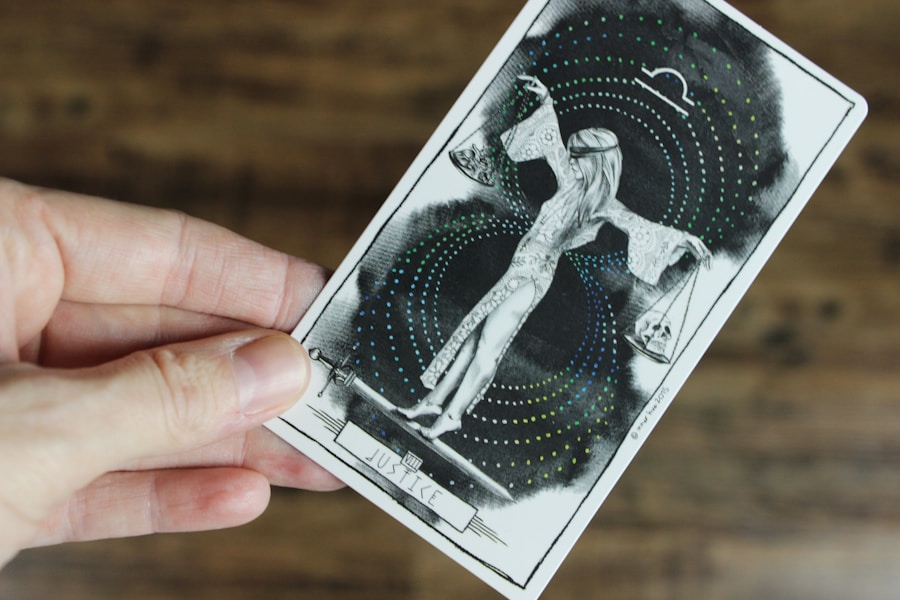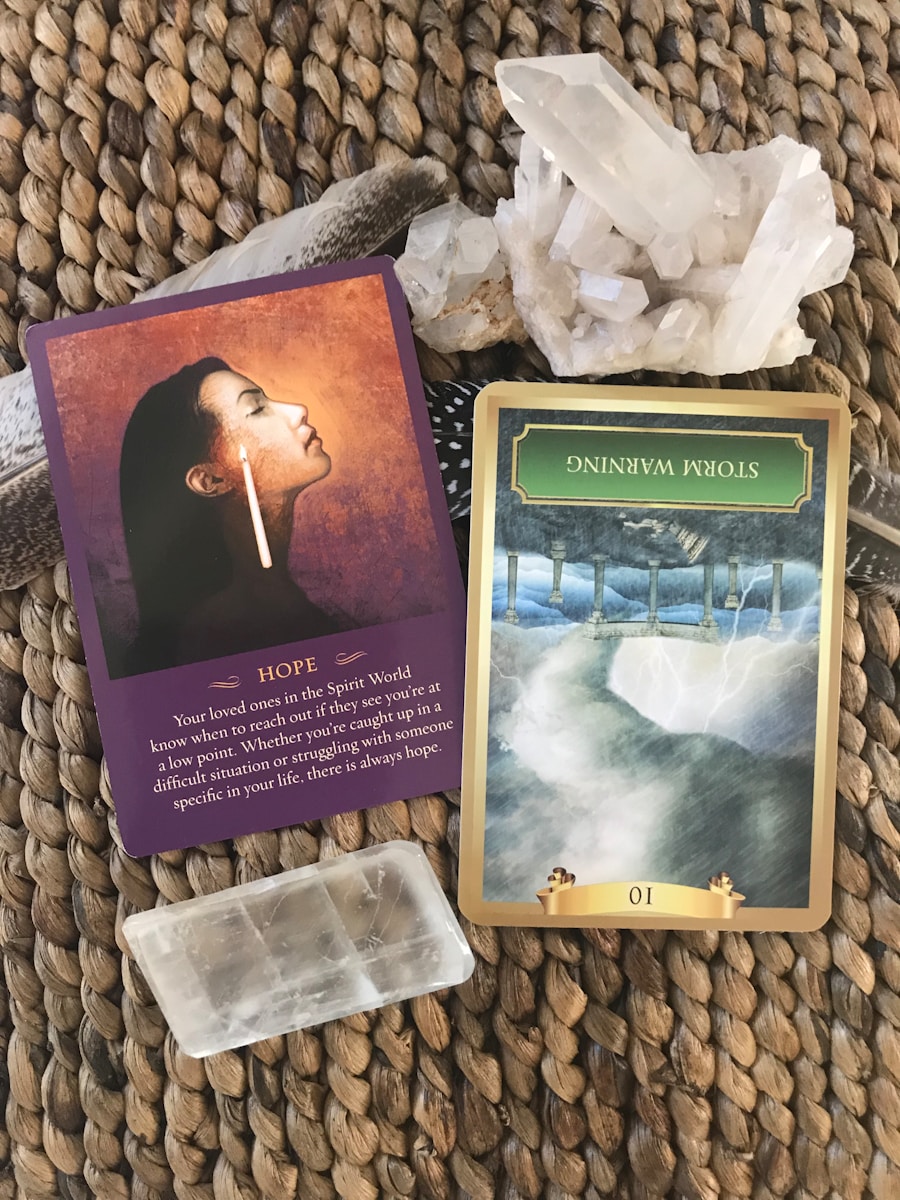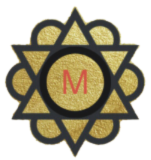
The Tarot is a complex system of divination that has captivated the human imagination for centuries. Originating in the 15th century as a card game in Europe, it evolved into a tool for spiritual insight and self-reflection by the 18th century. The Tarot deck typically consists of 78 cards, divided into two main sections: the Major Arcana and the Minor Arcana.
Each of these cards carries profound symbolism and archetypal meanings that resonate with the human experience. The Minor Arcana, on the other hand, consists of 56 cards divided into four suits: Cups, Pentacles, Swords, and Wands.
Each suit corresponds to different aspects of life—Cups relate to emotions and relationships, Pentacles to material matters and finances, Swords to thoughts and conflicts, and Wands to creativity and action.
Understanding the Tarot requires not only familiarity with the cards but also an appreciation for the rich symbolism and historical context that informs their meanings.
Key Takeaways
- Tarot is a tool for gaining insight and guidance through symbolism and intuition.
- Setting a clear intention before a tarot reading can help focus the energy and purpose of the reading.
- Choosing a tarot deck that resonates with you and your personal style is important for a meaningful reading.
- When pulling a tarot card, trust your intuition and pay attention to any immediate thoughts or feelings that arise.
- Reflecting on the meaning of the card and how it relates to your current situation can provide valuable insight and guidance.
- Applying the insight gained from the tarot reading to your day can help you make decisions and navigate challenges with clarity and confidence.
Setting the Intention
Articulating Your Goal
By articulating your intention, you create a focused energy that can enhance the clarity of your reading. This step is akin to tuning an instrument before a performance; it ensures that you are aligned with your purpose and open to receiving messages from the cards. Setting an intention can be as simple as stating your question aloud or writing it down in a journal.
Creating a Sacred Space
Some practitioners prefer to create a sacred space for their readings, incorporating elements such as candles, crystals, or incense to enhance their connection to the spiritual realm. This ritualistic approach can help ground your energy and foster a deeper connection with the cards.
Preparing Yourself
Additionally, taking a moment to meditate or breathe deeply before beginning can clear your mind of distractions, allowing you to approach the reading with an open heart and mind.
Choosing the Right Tarot Deck

Selecting a Tarot deck is a deeply personal choice that can significantly influence your reading experience. With countless decks available, each featuring unique artwork and interpretations of the traditional Tarot structure, finding one that resonates with you is crucial. Some individuals are drawn to classic decks like the Rider-Waite-Smith, known for its rich symbolism and accessible imagery.
Others may prefer more contemporary or themed decks that reflect their personal interests or aesthetic preferences. When choosing a deck, consider what speaks to you on an emotional or intuitive level. Spend time browsing through different options, either in person at a metaphysical shop or online through various retailers.
Pay attention to how each deck makes you feel; does it evoke curiosity, comfort, or inspiration? The right deck should feel like an extension of yourself, facilitating a connection that enhances your readings. Additionally, some decks come with guidebooks that provide insights into the meanings of each card, which can be particularly helpful for beginners or those looking to deepen their understanding of Tarot.
Pulling the Card
Once you have set your intention and chosen your deck, it’s time to pull a card or cards for your reading. This process can vary depending on personal preference or the specific spread you choose to use. A common method is to shuffle the deck while focusing on your question or intention, allowing your intuition to guide you in selecting a card.
Some practitioners prefer to cut the deck into three piles before drawing from one of them, while others may fan out the cards and choose one that stands out visually or energetically. The act of pulling a card is not merely mechanical; it is an intuitive process that invites synchronicity into your reading. The card you draw is believed to hold significance related to your question or situation, serving as a mirror reflecting your inner thoughts and feelings.
Whether you choose a single card for quick insight or multiple cards for a more comprehensive reading, each selection opens a dialogue between you and the Tarot. This interaction can reveal hidden truths and provide clarity on complex issues.
Reflecting on the Meaning
After pulling your card(s), it’s time to delve into their meanings. Each Tarot card carries its own set of interpretations based on traditional symbolism as well as personal insights that may arise during your reflection. For instance, if you draw The Empress, you might consider themes of fertility, abundance, and nurturing energy.
Reflecting on how these themes relate to your current life circumstances can yield valuable insights. It’s important to approach this reflection with an open mind; sometimes, the meanings may not be immediately apparent but can unfold over time. In addition to traditional interpretations, personal associations with symbols in the card can enrich your understanding.
For example, if you have a strong connection to nature, The Empress may evoke thoughts about your relationship with the earth or your creative endeavors. Journaling about your reflections can be particularly beneficial; writing down your thoughts allows you to explore deeper layers of meaning and track how your interpretations evolve over time. Engaging with the imagery of the card—considering colors, symbols, and figures—can also spark intuitive insights that enhance your reading.
Applying the Insight to Your Day

The final step in working with Tarot is applying the insights gained from your reading to your daily life. This process involves translating abstract concepts into actionable steps that align with your intentions. For instance, if your reading highlighted themes of self-care and nurturing through The Empress card, you might decide to dedicate time each week to activities that promote your well-being—be it gardening, cooking nourishing meals, or simply taking time for relaxation.
Integrating Tarot insights into daily life encourages mindfulness and intentional living. It serves as a reminder that the wisdom gleaned from the cards is not just theoretical but can manifest in tangible ways. You might create affirmations based on your reading or set specific goals that resonate with the messages received during your session.
By actively engaging with these insights, you cultivate a deeper relationship with yourself and foster personal growth. In conclusion, working with Tarot is an enriching practice that invites self-exploration and spiritual insight. From understanding the structure of the deck to setting intentions and reflecting on meanings, each step contributes to a holistic experience that can illuminate various aspects of life.
By applying these insights thoughtfully in daily routines, individuals can harness the transformative power of Tarot as a tool for guidance and self-discovery.
If you’re interested in exploring the deeper meanings behind tarot cards, you may want to check out






